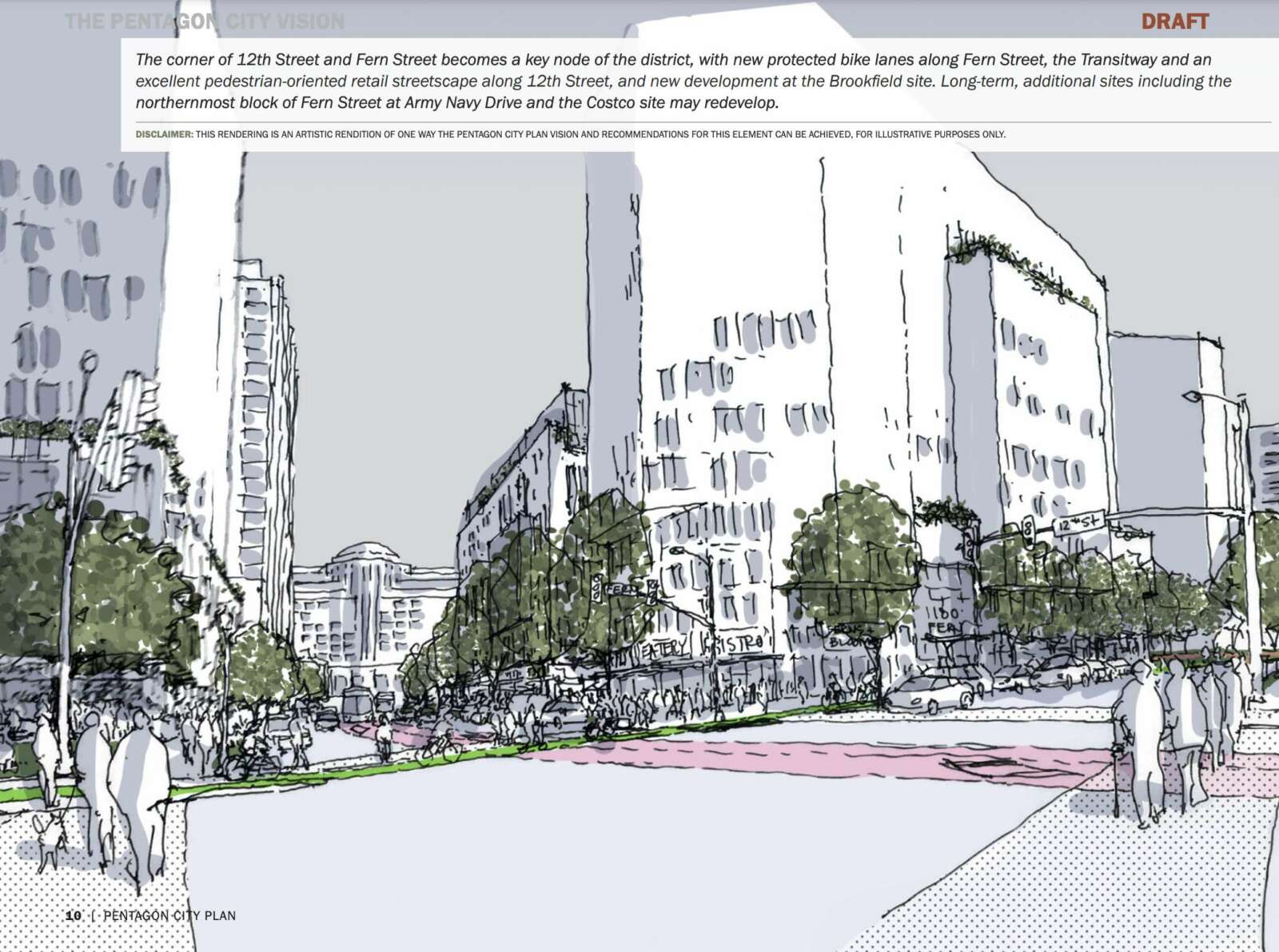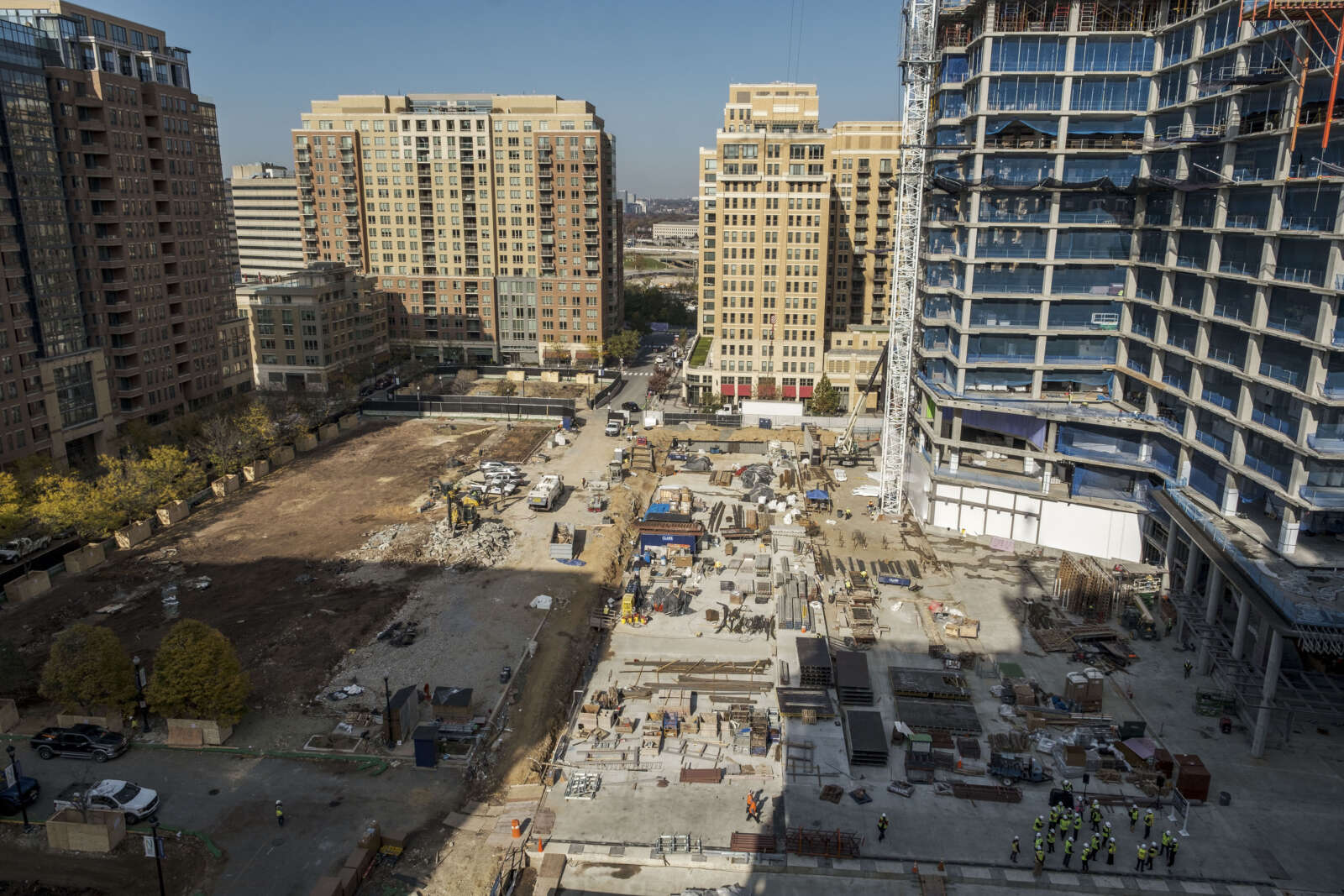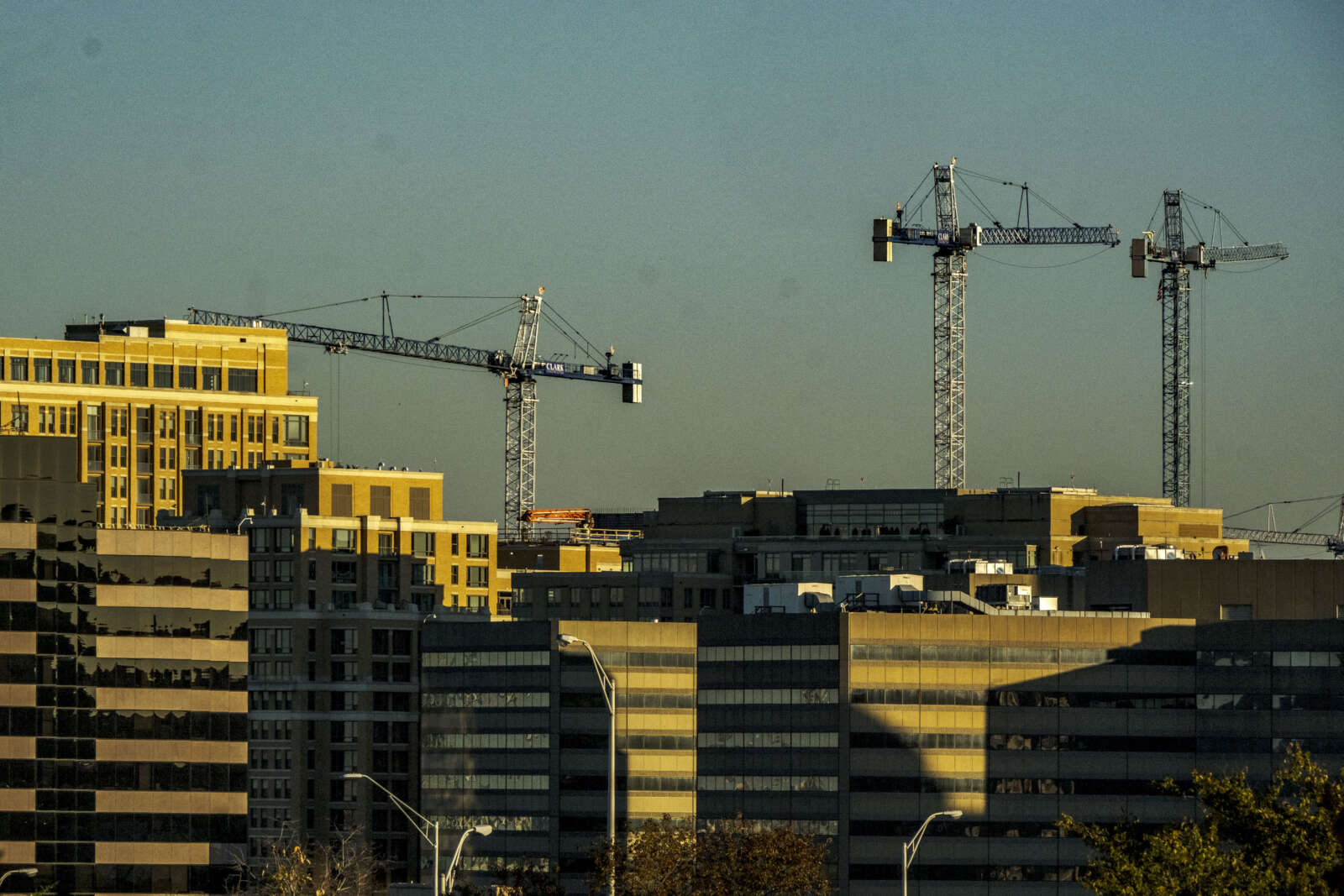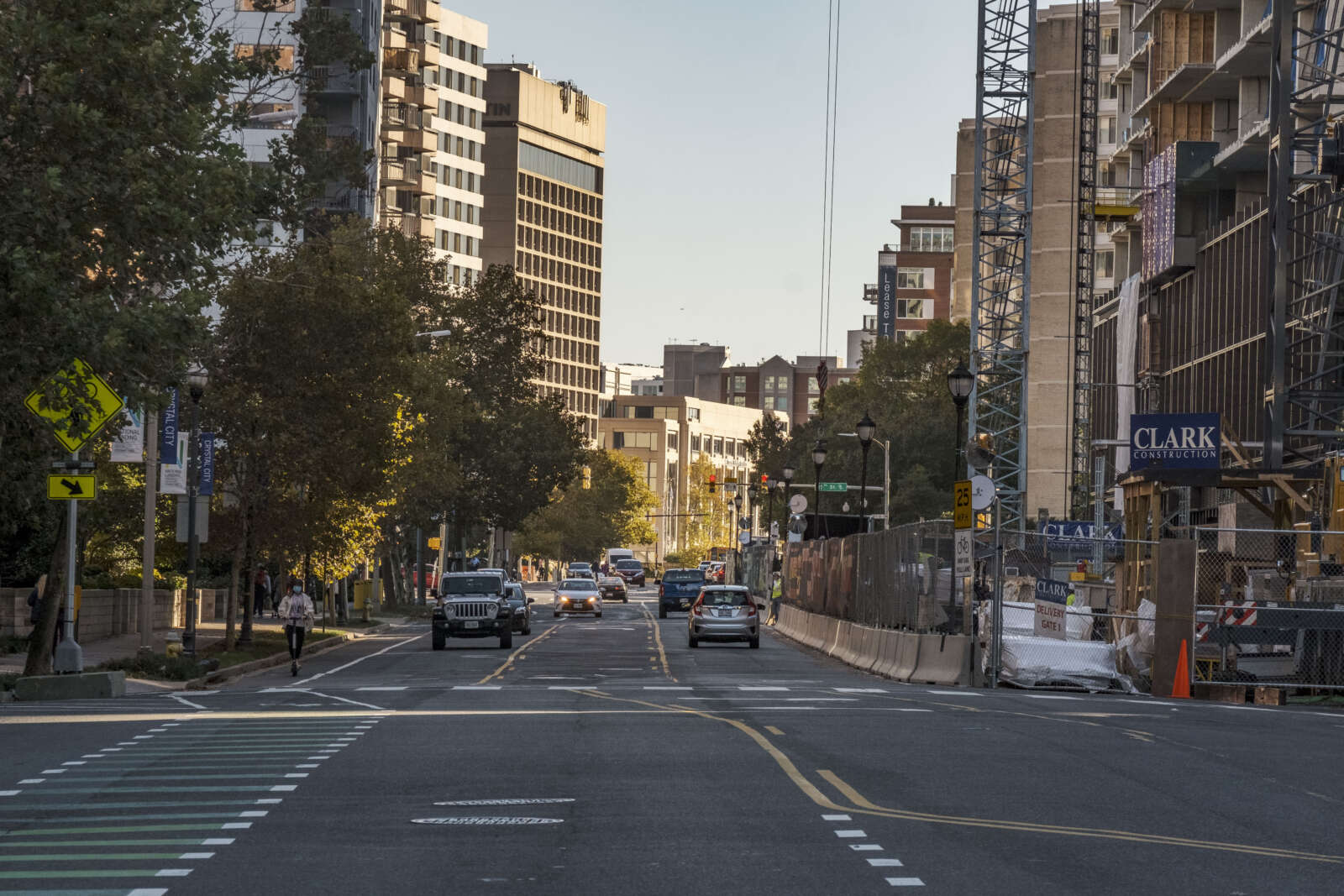A draft document poised to one day shape development in Pentagon City could be up for Arlington County Board consideration in February.
The document, known as the Pentagon City Sector Plan, culminates a year-plus study of the 116-acre area and the county policies governing its growth. It would replace a 45-year-old document that reached the end of its life in the shadow of Amazon’s under-construction second headquarters.
This Saturday, the Arlington County Board is slated to set a public hearing for Feb. 22, 2022 to hear comments on and consider adopting the plan. It envisions Pentagon City as a greener, more urban and less car-centric neighborhood and outlines what new county facilities will be needed to support a growing population.
“The new Pentagon City Sector Plan contains a new vision for a dynamic downtown and neighborhood where everyone is welcome and able to live regardless of race, income, age, and immigration status,” per a county report.
“Emphasis on strengthening the entire 22202 (zip code) community through diverse housing options, multi-modal transportation improvements, and embracing biophilic design are intended to guide future development and policymaking in Pentagon City,” it continues.
In February, the County Board will also consider a number of amendments to zoning ordinances and land use and transportation plans that county staff say are needed to implement the sector plan.
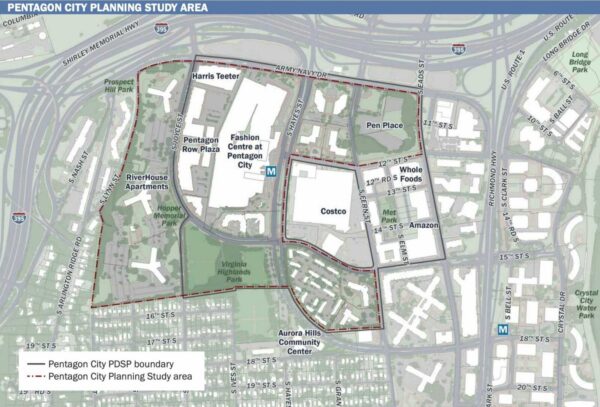
Amazon’s 2018 decision to build in Arlington not only prompted the planning effort, it also provoked concerns among residents about how the county will manage future growth and any potential strain on county facilities.
Those concerns — especially about stalled plans to add nearly 1,000 units to the RiverHouse Apartments on the neighborhood’s western side — have remained throughout the planning process and resurfaced this fall.
“Ongoing community concerns relate to the character and quantity of envisioned open space and guidance with respect to future public facility needs in and density levels at the RiverHouse site,” per the county report.
The plan lists other proposed projects in the pipeline through 2041, if developers come through. These include: the Transportation Security Administration headquarters, infill development at Fashion Centre at Pentagon City mall, an additional Regency Care rehabilitation center building, infill development at Westpost (formerly Pentagon Row), and the Drug Enforcement Agency site.
Mentioned as having “long-term potential” for redevelopment are the entire Fashion Centre site and the Costco site across from the mall.
In response to the concerns of residents, county staff added information about how they will address potential strains on county facilities, including potentially adding a fire station and an elementary school, the county report said.
The county expects the area will need another fire station in addition to Arlington County Fire Station 5 in Aurora Hills, which in 2019 already had a “high demand for service,” according to the fire department. This station would serve Pentagon City and a few neighborhoods west of it along Columbia Pike, like Arlington View, Arlington Village, Columbia Heights and Penrose.
The sector plan says the Aurora Hills Library and Community Center is the most likely site for a new elementary school. Per the county report, work on the the elementary school should be combined with a planning effort to expand the in-demand Virginia Highlands Park, also called for in the plan.
Meanwhile, Dominion Energy is expanding its substation to meet growing demands.
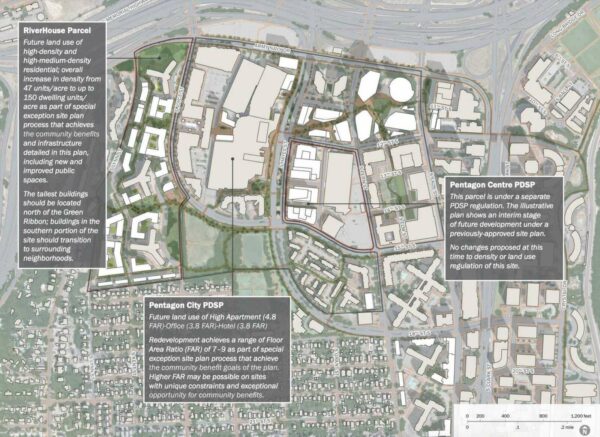
Those upgrades, as well as further transportation analysis and pedestrian improvements in the right-of-way identified in the plan, would need county funding.
But county staff anticipate developer contributions will offset costs associated with features envisioned in the plan, including infrastructure improvements, sustainability features and on-site affordable housing commitments on private property.
For example, the plan calls for the addition of protected bike lanes and walking, biking and scooting connections; the removal of traffic lanes; and the improvement of bus facilities to reduce the number of cars on the road.
It also outlines upgrades to Grace Hopper Park as well as the creation of at least 4.5 acres of new parks and plazas and a network of verdant walking and biking paths connecting people to public spaces and transit, dubbed “The Green Ribbon.”



